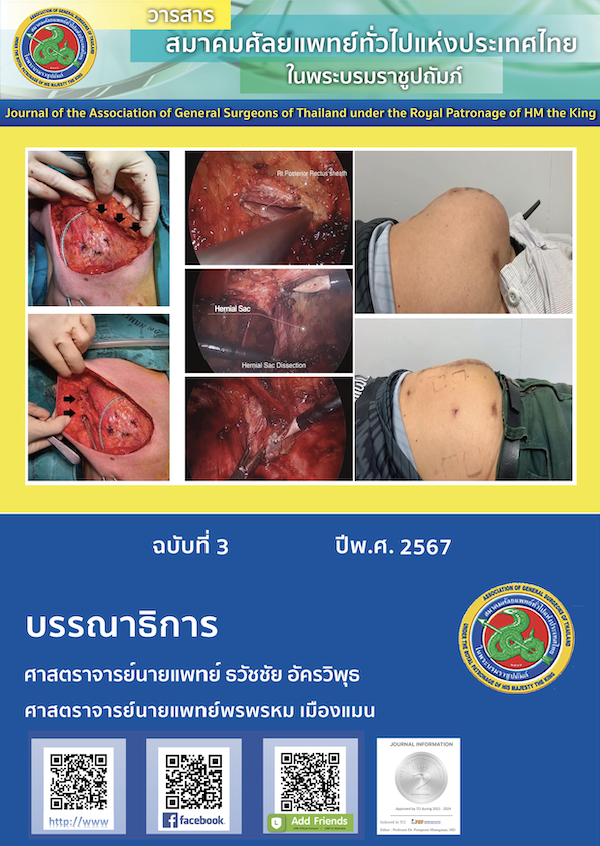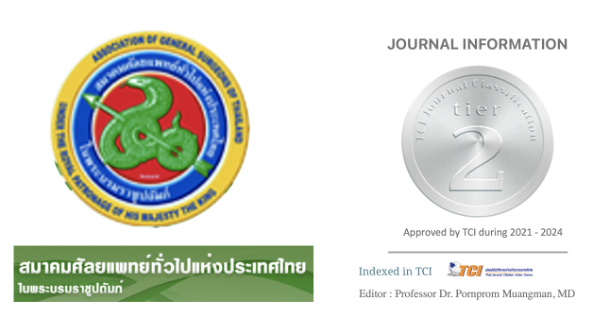Prevalence of colorectal polyp and cancer from colonoscopy screening in adults aged 45 and above, 2022-2024.
Keywords:
screening colonoscopy, colon polyps, colorectoal cancer, incidence, clinical practice, public healthAbstract
Introduction
Colorectal cancer represents a significant public health concern in Thailand, ranking as the third most common cancer among Thai people. Colonoscopy screening primarily emphasizes on those aged 50 and above, which aligns with Thai clinical practice guidelines. Meanwhile data regarding the prevalence of potentially precancerous polyps requiring removal in this age group remains limited in Thailand.
Objective
The main objective of this research is to determine the prevalence of colon polyps and colorectal cancer in the population aged 45 and above who underwent colonoscopy at Thammasat University Hospital between 2653 and 2567 BE. The secondary objective is to compare the prevalence of these lesions between genders and across age groups 45-49 years, 50-75 years, and 76 years and above.
Methods
This retrospective study analyzed electronic medical records of patients aged 45 and above who underwent screening colonoscopy at Thammasat University Hospital from 2022 to 2024. The analysis included demographic data, colonoscopy findings, including polyps and colon cancer prevalence across genders and age groups.
Results
A total of 993 participants were includedd in this study. All participants underwent colorectal cancer screening between 2020 and 2024, with annual enrollment of 214, 129, 179, 243, and 228 participants, respectively. 46.3% were male and 53.07% were female, with an age range of 45 to 90 years (mean 64.20 years). Of these, 17.72% were aged 45 to 50 years and 82.28% were aged 50 to 75 year old. Of all participants screened, 11.18% had colon polyps, and 16.82% were diagnosed with colon cancer. In the 45-49 age group, the prevalence of colon polyps was 15.09% and the prevalence of colon cancer was 13.21%. The prevalence of colon polyps There was no statistically significant difference in the prevalence of polyps and colon cancer in men and women (10.94% in men and 11.39% in women), as was the case for colon cancer (17.17% in men and 16.51% in women). The prevalence of polyps and colon cancer was also not statistically significant.
Conclusion
The findings demonstrate that colonic abnormalities in the 45-49 age group occur at a clinically significant rate of approximately 15.09% and 13.21% for colon polyp and cancer, respectively. This suggests that patients seeking colorectal cancer screening consultation at tertiary care facilities may benefit from initiating screening at age 45.
Keywords: Screening colonoscopy, Colon polyps, Colorectal cancer, Colorectal cancer incidence, Clinical practice , Public health




